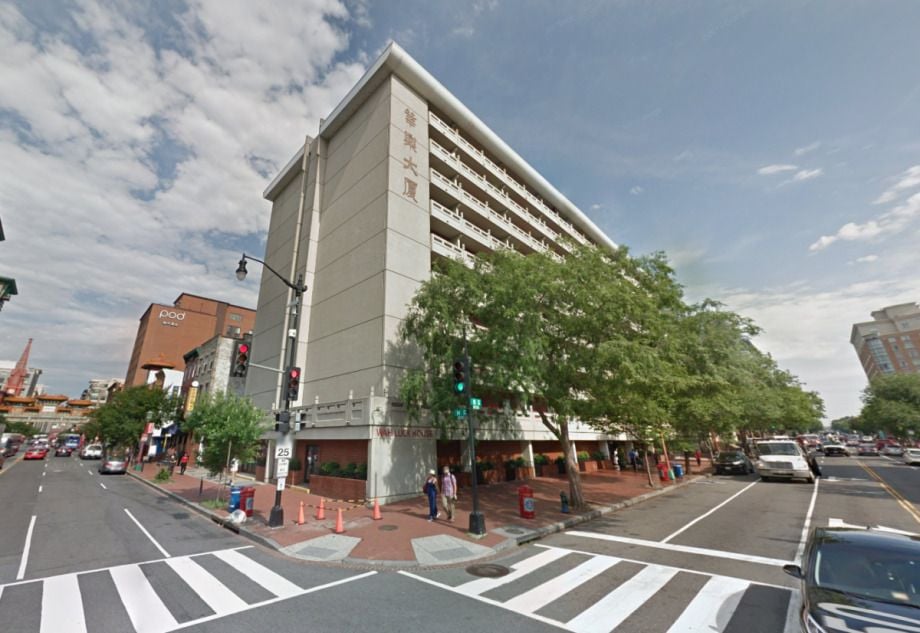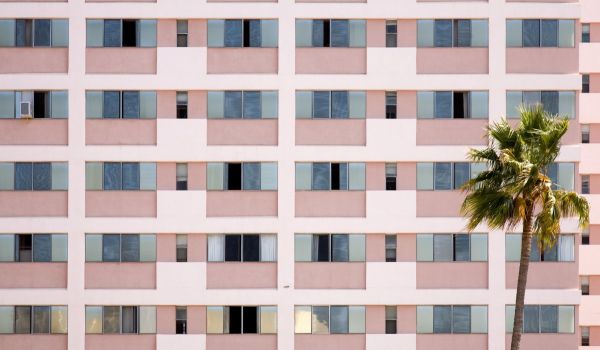Washington, D.C.’s Chinatown has, by some estimates, fewer than 300 Chinese people living in it. If not for local codes mandating Chinese architecture and signage, the neighborhood—which, like many D.C. neighborhoods, is rapidly filling up with newer, wealthier residents—it would be hard to recognize Chinatown as Chinese at all.
Then the owner of Wah Luck House Apartments, one of the last remaining affordable residences in the neighborhood and one of the largest single Chinese-American residences in D.C., decided to sell the building. It could have easily gone to a market rate developer.
The tenants of Wah Luck House, a 10-story, 153-unit building built in 1982, couldn’t afford market-rate rents, which in Chinatown currently hover around $2,000 for just a one-bedroom apartment. But the tenants had another option. In D.C., the building couldn’t go straight to the open market. Since 1980, the District’s Tenant Opportunity to Purchase Act has required that residential tenants in any building up for sale or demolition must be offered the first opportunity to buy the building—either individually as tenants, turning the building into condominiums, or by forming a tenant association and buying the building as a whole, usually in partnership with a developer of their choosing. It’s not easy to organize 153 units into a tenant association and agree to purchase their building collectively within the 45-day window afforded by the law, but they managed to do it.
There have been notorious loopholes created, closed, and found again in the history of the Tenant Opportunity to Purchase Act, allowing many landlords to circumvent the law (and some tenants to abuse it). But it’s still become an important tool for preserving affordable housing, especially as the District’s housing market has heated up over the past decade. One study found that the law helped preserve around 1,400 units of affordable housing in the District from 2002-2013. Since 2016, D.C. tenants have exercised their rights as part of two dozen deals to preserve affordable housing, according to the District’s Department of Housing and Community Development. Wah Luck House was one of them.
Working with the National Foundation for Affordable Housing as their developer and the DC Housing Finance Agency, the tenants managed to access the $77 million needed to acquire and rehab their their building. The deal closed last month. Wah Luck House will get a new roof, each unit will get a new kitchen and bathroom, and the first floor will get a newly renovated space for a healthcare provider. No one will be forced to move out, not even temporarily during the rehab.
Working with a developer is typical for buildings of this size taking advantage of TOPA.
“It’s never just the tenants in the building going out and raising capital,” says Christopher Donald, the housing finance agency’s senior vice president of multifamily lending and neighborhood investments. “Residents organize and collectively decide if they want to move forward or not, then interview potential development partners who propose what they would do for the tenant association. How that proposal is structured will greatly influence the potential success for that deal.”
It wasn’t the first time, and, thanks to affordable housing advocates, it won’t be the last time the DC Housing Finance Agency helps to finance a deal like this one. Some $39 million in financing for the Wah Luck House deal came through tax-exempt bonds issued by the agency. Bonds like those would no longer be tax-exempt had the first version of the Tax Cuts and Jobs Act, passed by the House of Representatives, become law.
The National Low-Income Housing Coalition estimates the loss of tax exemption for such bonds would result in 80,000 fewer affordable housing units built or rehabilitated per year. The final version of the tax cut bill, after some heavy advocacy from the coalition and others, preserved the tax exemption for those bonds.
And yet, even with the continued availability of tax-exempt bond financing, raising capital for affordable housing is becoming more difficult. Another $24 million for Wah Luck House came through low-income housing tax credits. The newly lowered corporate tax rate means it will be harder to raise such amounts in the future. Large banks, insurance companies, and other financial firms bid competitively to purchase most low-income housing tax credits. Lower corporate tax rates mean less demand from bidders. Affordable housing developers could previously fetch more than one dollar from investors per dollar of tax credits, but in anticipation of a corporate tax cut, that ratio started to fall even before the tax cut bill became law.
And the D.C. housing market continues to heat up, meaning the price to purchase any building, tenant-approved or not, keeps going up.
“As the city has gentrified, there’s been a lot of pressure on pricing,” Donald notes. “People are having to buy these [properties] that are inflated in cost and still keep them affordable.”
But there may be more good news after all. Since 2016, a new revolving loan fund has aggregated $12 million from around 30 D.C.-area investors, including foundations, corporate giving programs, and philanthropic-minded individuals who are interested in supporting the creation and preservation of affordable housing in the region. The fund has financed five total acquisitions so far, with a sixth on the way. Three of the completed acquisitions were made through TOPA, preserving a total of 341 units of affordable housing in northwest, northeast, and southeast DC. (The other three deals were outside the District.)
The city itself also chipped in: for each of the three TOPA deals financed by the fund, D.C’s Department of Housing and Community Development’s Site Acquistion Funding Initiative extended a zero-interest loan as part of each transaction.
The local investor dollars were aggregated through the Enterprise Community Impact Note, an investment product created and sold by Enterprise Community Loan Fund, a subsidiary of Enterprise Community Partners, based in nearby Columbia, Maryland. Like a certificate of deposit at a bank, the loan fund offers the notes in various terms from one to ten years, paying higher interest rates for longer terms. The interest rates offered are generally in the range of what you currently might get on a certificate of deposit at a bank. Unlike a bank, the investments are not federally insured—instead, the parent organization Enterprise Community Partners guarantees repayment dollar-for-dollar.
“We had good results getting non-traditional investors to the table who cared about the housing crisis and wanted to take action but didn’t know how,” says Rachel Reilly Carroll, associate director of impact investing at the loan fund. “One of the big lessons was just the demonstration that if given the opportunity people can and will come to the table with investments for their communities. We’re still pulling out more lessons learned to understand if we can bring this to another city or other places.”
Using the same legal and regulatory framework, others like Calvert Impact Capital (formerly Calvert Foundation) have used their own versions of investment notes to raise capital from investors interested in making a difference while accruing some financial return. Since 1995, Calvert has raised over $2 billion through its notes, funneling them to investments all around the world. They’ve also tried their hand at place-based investor strategies through the Ours To Own initiatives or Benefit Chicago.
Most of Enterprise’s impact note investors make two or three year investments, Reilly Carroll says, so this year will be the first in which most of the new D.C.-area investors will face a choice to cash out or renew their investments. Reilly Carroll is optimistic that most will renew. For these investors, they’re less interested in the interest they’ve accrued than they are in the social impact of their investment—does a more stable housing situation mean children are doing better in school, people are eating healthier or reducing debt or increasing savings, or finding better jobs.
“Our investors are always interested to hear what their impact is,” says Reilly Carroll.

Oscar is Next City's senior economic justice correspondent. He previously served as Next City’s editor from 2018-2019, and was a Next City Equitable Cities Fellow from 2015-2016. Since 2011, Oscar has covered community development finance, community banking, impact investing, economic development, housing and more for media outlets such as Shelterforce, B Magazine, Impact Alpha and Fast Company.
Follow Oscar .(JavaScript must be enabled to view this email address)




_600_350_80_s_c1.jpg)











